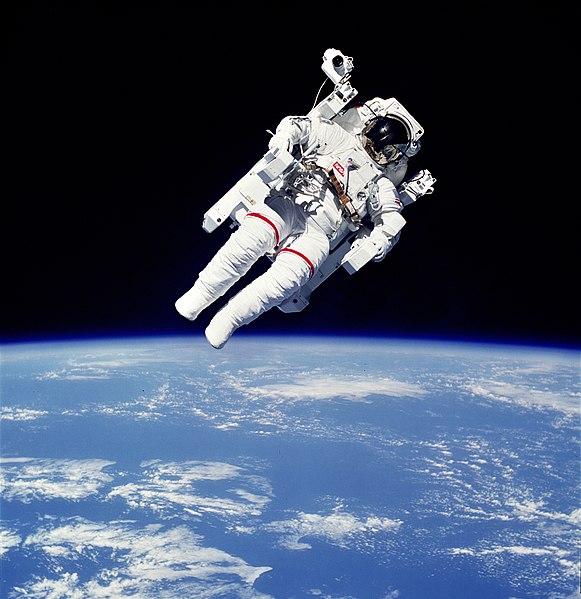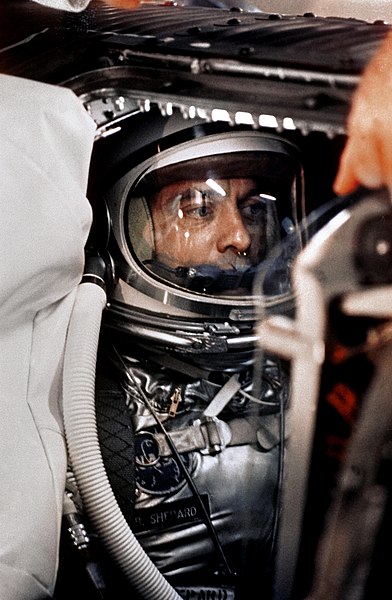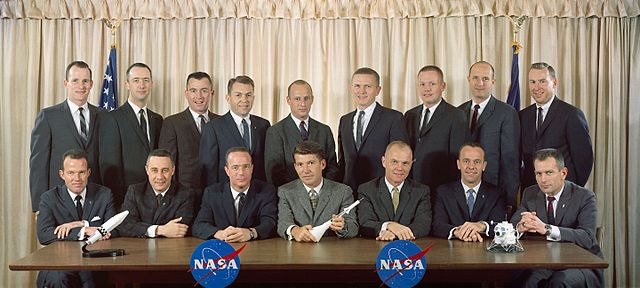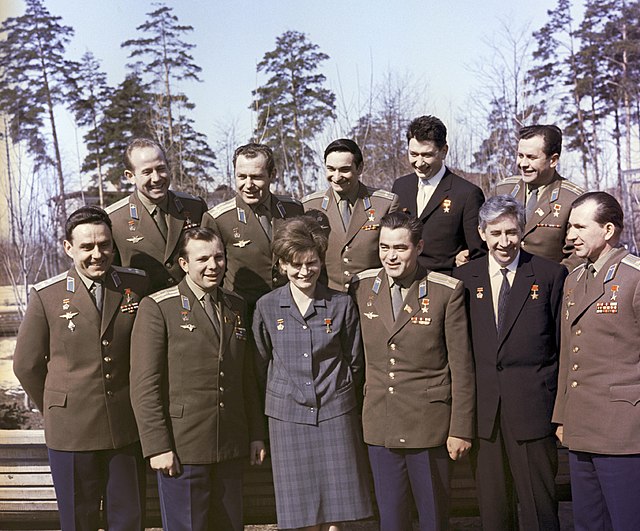The Mercury Seven were the group of seven astronauts selected to fly spacecraft for Project Mercury. They are also referred to as the Original Seven and Astronaut Group 1. Their names were publicly announced by NASA on April 9, 1959: Scott Carpenter, Gordon Cooper, John Glenn, Gus Grissom, Wally Schirra, Alan Shepard, and Deke Slayton. The Mercury Seven created a new profession in the United States, and established the image of the American astronaut for decades to come.
The Mercury Seven in 1960 Back: Alan Shepard, Gus Grissom, Gordon Cooper; Front: Wally Schirra, Deke Slayton, John Glenn, Scott Carpenter
The Mercury Seven in front of an F-106 Delta Dart
(L to R) Cooper, Schirra (partially obscured), Shepard, Grissom, Glenn, Slayton, and Carpenter
Memorial at Cape Canaveral Air Force Station Launch Complex 14
An astronaut is a person trained, equipped, and deployed by a human spaceflight program to serve as a commander or crew member aboard a spacecraft. Although generally reserved for professional space travelers, the term is sometimes applied to anyone who travels into space, including scientists, politicians, journalists, and tourists.
NASA astronaut Bruce McCandless II using a Manned Maneuvering Unit outside Space Shuttle Challenger on shuttle mission STS-41-B in 1984
Alan Shepard aboard Freedom 7 (1961)
The first sixteen NASA astronauts to be selected, February 1963. Back row: White, McDivitt, Young, See, Conrad, Borman, Armstrong, Stafford, Lovell. Front row: Cooper, Grissom, Carpenter, Schirra, Glenn, Shepard, Slayton.
The first eleven Soviet cosmonauts to fly, July 1965. Back row, left to right: Leonov, Titov, Bykovsky, Yegorov, Popovich; front row: Komarov, Gagarin, Tereshkova, Nikolayev, Feoktistov, Belyayev.








